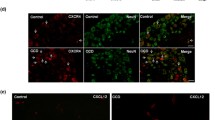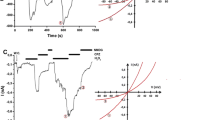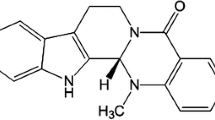Abstract
Previous study has shown that there is a functional link between the transient receptor potential vanilloid type 1 (TRPV1) receptor and protease-activated receptor-4 (PAR4) in modulation of inflammation and pain. Capsaicin activation of TRPV1 is involved in enhancement of the expression of TRPV1 in mRNA and protein in dorsal root ganglion (DRG) in vivo. Whether capsaicin could influence expression of PAR4 in primary sensory neurons remains unknown. In the present study, expression of PAR4 in cultured rat DRG neurons was observed using immunofluorescence, real-time PCR and Western blots to examine whether increases in PAR4 mRNA and protein levels are induced by capsaicin treatment with or without pre-treatment of forskolin, a cyclic AMP/protein kinase A (cAMP/PKA) activator or PKA inhibitor fragment 14-22 (PKI14-22), a PKA inhibitor. Capsaicin treatment of cultured DRG neurons significantly increased the expression of PAR4 in mRNA and protein levels. The percentage of PAR4-, TRPV1-immunoreactive neurons and their co-localization in cultured DRG neurons increased significantly in the presence of capsaicin as compared with that in the absence of capsaicin. Compared with capsaicin-only group, pre-incubation with forskolin strongly enhanced the capsaicin-induced increase of PAR4 in mRNA and protein levels. Consistent with the involvement of PKA in the modulation of PAR4 expression, this evoked expression both at mRNA and protein levels was significantly inhibited after PKA was inhibited by pre-incubation with PKI14-22. Taken together, these results provide evidence that TRPV1 activation significantly increases the expression of PAR4 mRNA and protein levels in primary cultures of DRG neurons after capsaicin incubation. Effects of capsaicin on PAR4 expression appear to be mediated by cAMP/PKA signal pathways in DRG neurons.







Similar content being viewed by others
References
Aley KO, Martin A, McMahon T, Mok J, Levine JD, Messing RO (2001) Nociceptor sensitization by extracellular signal-regulated kinases. J Neurosci 21:6933–6939
Amadesi S, Cottrell GS, Divino L, Chapman K, Grady EF, Bautista F, Karanjia R, Barajas-Lopez C, Vanner S, Vergnolle N, Bunnett NW (2006) Protease-activated receptor 2 sensitizes TRPV1 by protein kinase C epsilon- and A-dependent mechanisms in rats and mice. J Physiol 575:555–571
Asfaha S, Cenac N, Houle S, Altier C, Papez MD, Nguyen C, Steinhoff M, Chapman K, Zamponi GW, Vergnolle N (2007) Protease-activated receptor-4: a novel mechanism of inflammatory pain modulation. Br J Pharmacol 150:176–185
Augé C, Balz-Hara D, Steinhoff M, Vergnolle N, Cenac N (2009) Protease-activated receptor-4 (PAR 4): a role as inhibitor of visceral pain and hypersensitivity. Neurogastroenterol Motil 21:1189–e107
Bhave G, Zhu W, Wang H, Brasier DJ, Oxford GS, Gereau RW 4th (2002) cAMP-dependent protein kinase regulates desensitization of the capsaicin receptor (VR1) by direct phosphorylation. Neuron 35:721–731
Bulling DGS, Kelly D, Bond S, McQueen DS, Seckl JR (2001) Adjuvant-induced joint inflammation causes very rapid transcription of β-preprotachykinin and a-CGRP genes in innervating sensory ganglia. J Neurochem 77:373–382
Dattilio A, Vizzard MA (2005) Up-regulation of protease activated receptors in bladder after cyclophosphamide induced cystitis and colocalization with capsaicin receptor (VR1) in bladder nerve fibers. J Urol 173:635–639
De Petrocellis L, Harrison S, Bisogno T, Tognetto M, Brandi I, Smith GD, Creminon C, Davis JB, Geppetti P, Di Marzo V (2001) The vanilloid receptor (VR1)-mediated effects of anandamide are potently enhanced by the cAMP-dependent protein kinase. J Neurochem 77:1660–1663
Dong F, Du YR, Xie W, Strong JA, He XJ, Zhang JM (2012) Increased function of the TRPV1 channel in small sensory neurons after local inflammation or in vitro exposure to the pro-inflammatory cytokine GRO/KC. Neurosci Bull 28:155–164
García PS, Gulati A, Levy JH (2010) The role of thrombin and protease-activated receptors in pain mechanisms. Thromb Haemost 103:1145–1151
Hamilton JR, Frauman AG, Cocks TM (2001) Increased expression of protease-activated receptor-2 (PAR2) and PAR4 in human coronary artery by inflammatory stimuli unveils endothelium-dependent relaxations to PAR2 and PAR4 agonists. Circ Res 89:92–98
Han Y, Li Y, Xiao X, Liu J, Meng XL, Liu FY, Xing GG, Wan Y (2012) Formaldehyde up-regulates TRPV1 through MAPK and PI3K signaling pathways in a rat model of bone cancer pain. Neurosci Bull 28:165–172
Hollenberg MD, Saifeddine M, Sandhu S, Houle S, Vergnolle N (2004) Proteinase-activated receptor-4: evaluation of tethered ligand-derived peptides as probes for receptor function and as inflammatory agonists in vivo. Br J Pharmacol 143:443–454
Huang ZJ, Li HC, Cowan AA, Liu S, Zhang YK, Song XJ (2012) Chronic compression or acute dissociation of dorsal root ganglion induces cAMP-dependent neuronal hyperexcitability through activation of PAR2. Pain 153:1426–1437
Julius D, Basbaum AI (2001) Molecular mechanisms of nociception. Nature 413:203–210
Karanjia R, Spreadbury I, Bautista-Cruz F, Tsang ME, Vanner S (2009) Activation of protease activated receptor-4 inhibits the intrinsic excitability of colonic dorsal root ganglia neurons. Neurogastroenterol Motil 21:1218–1221
Lee J, Chung MK, Ro JY (2012) Activation of NMDA receptors leads to phosphorylation of TRPV1 S800 by protein kinase C and A-Kinase anchoring protein 150 in rat trigeminal ganglia. Biochem Biophys Res Commun 424:358–363
McDougall JJ, Zhang C, Cellars L, Joubert E, Dixon CM, Vergnolle N (2009) Triggering of proteinase-activated receptor 4 leads to joint pain and inflammation in mice. Arthritis Rheum 60:728–737
Mohapatra DP, Nau C (2005) Regulation of Ca2+-dependent desensitization in the vanilloid receptor TRPV1 by calcineurin and cAMP-dependent protein kinase. J Biol Chem 280:13424–13432
Nakanishi M, Hata K, Nagayama T, Sakurai T, Nishisho T, Wakabayashi H, Hiraga T, Ebisu S, Yoneda T (2010) Acid activation of Trpv1 leads to an up-regulation of calcitonin gene-related peptide expression in dorsal root ganglion neurons via the CaMK-CREB cascade: a potential mechanism of inflammatory pain. Mol Biol Cell 21:2568–2577
Nishimura S, Ishikura H, Matsunami M, Shinozaki Y, Sekiguchi F, Naruse M, Kitamura T, Akashi R, Matsumura K, Kawabata A (2010) The proteinase/proteinase-activated receptor-2/transient receptor potential vanilloid-1 cascade impacts pancreatic pain in mice. Life Sci 87:643–650
Passmore GM (2005) Dorsal root ganglion neurons in culture: a model system for identifying novel analgesic targets. J Pharmacol Toxicol Methods 51:201–208
Ramachandran R, Hollenberg MD (2008) Proteinases and signalling: pathophysiological and therapeutic implications via PARs and more. Br J Pharmacol 153:S263–S282
Rathee PK, Distler C, Obreja O, Neuhuber W, Wang GK, Wang SY, Nau C, Kress M (2002) PKA/AKAP/VR-1 module: a common link of Gs-mediated signaling to thermal hyperalgesia. J Neurosci 22:4740–4745
Ritchie E, Saka M, Mackenzie C, Drummond R, Wheeler-Jones C, Kanke T, Plevin R (2007) Cytokine upregulation of proteinase-activated receptors 2 and 4 expression mediated by p38 MAP kinase and inhibitory kappa B kinase b in human endothelial cells. Br J Pharmacol 150:1044–1054
Russell FA, Veldhoen VE, Tchitchkan D, McDougall JJ (2010) Proteinase-activated receptor-4 (PAR4) activation leads to sensitization of rat joint primary afferents via a bradykinin B2 receptor-dependent mechanism. J Neurophysiol 103:155–163
Schnizler K, Shutov LP, Van Kanegan MJ, Merrill MA, Nichols B, McKnight GS, Strack S, Hell JW, Usachev YM (2008) Protein kinase A anchoring via AKAP150 is essential for TRPV1 modulation by forskolin and prostaglandin E2 in mouse sensory neurons. J Neurosci 28(19):4904–4917
Senba E, Katanosaka K, Yajima H, Mizumura K (2004) The immunosuppressant FK506 activates capsaicin- and bradykinin-sensitive DRG neurons and cutaneous C-fibers. Neurosci Res 50:257–262
Vellani V, Petrosino S, De Petrocellis L, Valenti M, Prandini M, Magherini PC, McNaughton PA (2008) Functional lipidomics. Calcium-independent activation of endocannabinoid/endovanilloid lipid signalling in sensory neurons by protein kinases C and A and thrombin. Neuropharmacology 55:1274–1279
Vellani V, Kinsey AM, Prandini M, Hechtfischer SC, Reeh P, Magherini PC, Giacomoni C, McNaughton PA (2010) Protease activated receptors 1 and 4 sensitize TRPV1 in nociceptive neurons. Mol Pain 6:61–78
Vergnolle N, Derian CK, D’Andrea MR, Steinhoff M, Andrade-Gordon P (2002) Characterization of thrombin-induced leukocyte rolling and adherence: a potential pro-inflammatory role for proteinase-activated receptor-4 (PAR-4). J Immunol 169:1467–1473
Wang W, Cao X, Liu C, Liu L (2012) Cannabinoid WIN 55, 212–2 inhibits TRPV1 in trigeminal ganglion neurons via PKA and PKC pathways. Neurol Sci 33:79–85
Xu X, Wang P, Zou X, Li D, Fang L, Lin Q (2009) Increases in transient receptor potential vanilloid-1 mRNA and protein in primary afferent neurons stimulated by protein kinase C and their possible role in neurogenic inflammation. J Neurosci Res 87:482–494
Zhang W, Gao J, Zhao T, Wei L, Wu W, Bai Y, Zou D, Li Z (2011) Proteinase-activated receptor 2 mediates thermal hyperalgesia and is upregulated in a rat model of chronic pancreatitis. Pancreas 40:300–307
Zhao JH, Dong L, Shi HT, Wang ZY, Shi HY, Ding H (2012) The expression of protease-activated receptor 2 and 4 in the colon of irritable bowel syndrome patients. Dig Dis Sci 57:58–64
Zhu WJ, Yamanaka H, Obata K, Dai Y, Kobayashi K, Kozai T, Tokunaga A, Noguchi K (2005) Expression of mRNA for four subtypes of the proteinase-activated receptor in rat dorsal root ganglia. Brain Res 1041:205–211
Acknowledgments
This study was supported by the National Nature Science Foundation of China (81070898) and Nature Science Foundation of Shandong Province (2009ZRB01209).
Author information
Authors and Affiliations
Corresponding author
Rights and permissions
About this article
Cite this article
Chen, D., Wang, Z., Zhang, Z. et al. Capsaicin Up-Regulates Protease-Activated Receptor-4 mRNA and Protein in Primary Cultured Dorsal Root Ganglion Neurons. Cell Mol Neurobiol 33, 337–346 (2013). https://doi.org/10.1007/s10571-012-9899-y
Received:
Accepted:
Published:
Issue Date:
DOI: https://doi.org/10.1007/s10571-012-9899-y




